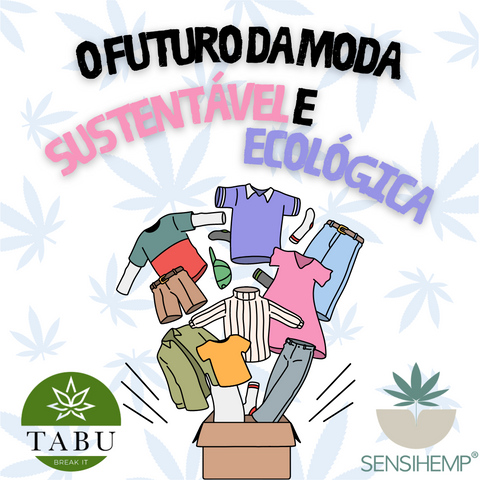

TABU CBD in Partnership with SensiHemp
First… what is Hemp?
Hemp Fabric: The History of the Past and the Sustainability of the Future
A Sustainable Gesture:
- Hemp is a hardy plant that grows quickly and requires very little water compared to other crops used in the textile industry.
- Additionally, it does not require the intensive use of pesticides or herbicides , making it an environmentally friendly choice as it improves and protects soil health.
- When compared to cotton, hemp is a much more sustainable option , as conventional cotton cultivation is known to be water and chemical resource intensive.
- The fact that it has a short growing cycle means it can be harvested every four months and grown twice a year, so hemp has the potential to absorb twice the carbon from the atmosphere and generate twice the yield compared to other cultures.
- Using phytoremediation, hemp grows deep into contaminated soil , absorbing harmful substances while retaining useful nutrients. Pollutants are removed from the soil and stored mainly in the aerial parts of the plant, such as leaves and stems.
Unique Features:

Why did you create SensiHemp?
I worked for 20 years in the textile industry with fast fashion , and over time I realized the negative environmental and social impact it has on our planet.
Sensihemp was born out of the need for change in this sector, in which fashion coexists with humanity and nature, and I decided to create this brand to show that it is possible.
The future of fashion is to go back in time, rescue ancient techniques and knowledge that are falling into oblivion , recover the know-how of working with hemp fiber that was once extremely important in our country.
What are the brand’s Values?
Sensihemp is a fashion project around hemp that aims to create an innovative ecosystem based on regeneratively grown hemp fiber in collaboration with artisanal and industrial communities in Portugal.
It aims to create products that are timeless , respectful of the environment, regenerative and have ethical and social responsibility , through the use of traditional techniques and processes that are on the verge of extinction, such as the use of natural dyes derived from plants, roots and minerals, which help to reduce tons of toxic waste and water pollution.
🫱🏾🫲🏽The fundamental objective of SENSIHEMP is to be a regenerative model, producing wealth in communities and at the same time having a positive social and environmental impact, and perceiving it as a continuous process that starts in the first section (farmer) and ends at the end customer.🤩
Why Choose Hemp Fabric?
I chose hemp for several reasons, for the qualities and advantages it has over other fibers, because growing hemp offers a series of environmental benefits that help mitigate the effects of climate change and restore healthy ecosystems, and for the strong historical connection it has with our country.
You can use the following 15% Discount Code when checking out your purchase in both online stores:
SENSITABU
https://tabucbd.com/




Comments (0)
There are no comments for this article. Be the first one to leave a message!